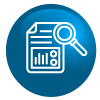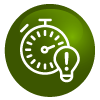

Power Apps POC Hackathon
Transform manual business tasks to digital, automated processes
Download the Offer
And the Award Goes To…
Microsoft recently announced its latest MVP awards. Congratulations to Hitachi Solutions’ Troy Taylor for garnering that acknowledgment for his fantastic work creating numerous independent publisher connectors for Power Apps, Power Automate, and Microsoft logic apps. This recent development brings Hitachi Solutions’ MVP total to 16 developers for business applications and Power Platform. We are, indeed, the tech hub for Power Platform development!
And While We’re At It …
Recently, Microsoft gave Hitachi Solutions NA kudos for our work “Driving digital transformation on the frontline” with Barrie Police Service in Ontario. We partnered with Barrie to develop an Officer Reporting application, which streamlines operations in real-time from the field. We’re currently working on a case study with the folks at Barrie and look forward to telling you more of the story.

Use Case of the Month
This month we’re turning the lens onto ourselves. At Hitachi Solutions we use Microsoft Power Platform to automate many of our processes. Here’s one example:
Hitachi Solutions has an employee executive internship program. Working side-by-side with our North America COO, Jerry Hawk, and other Senior Leaders, this internal program gives our team members the opportunity to gain knowledge and experience about how Hitachi Solutions is run and managed, an opportunity to understand company strategy and what, how and why key decisions are made and to participate in senior leadership meetings and help create, lead, and participate in key initiatives that will assist in driving our business forward.
Traditionally, the application for this program was a Microsoft Word form the employee would fill out, then send to their manager for approval. The form was forwarded to and through senior leadership for final approvals. This system was inefficient, forms could easily get lost, and it was impossible to see where an application was in the process.
We replaced this outdated method with a Power App, making it very easy for interested participants to apply for the program. Power Automate then routes the approval to the employee’s manager and once approved, the application is routed to senior leadership for final approval.
The benefits received from modernizing this process with the Power Platform include:
- Traceability of applications and where they are in the approval process
- Automatic routing to the approving manager based on organization structure (using the Microsoft 365 User connector)
- Historical database of former applications
- Notes can be captured regarding each applicant and stored for historical purposes
- Record level security limits the visibility of applications to only those who need to see the application
- Proactive notifications in Microsoft Teams reduce delays in the review and approval cycle
- Increased productivity by reducing the amount of time required to submit and review/approve applications
This is a great example of how Microsoft Power Platform can quickly modernize your manual processes and improve employee productivity.

What is the AAD user table?
The question: Users of Microsoft Dataverse may have noticed a new table in their database called “AAD User,” and wondered, “What is this table compared to in the User table?”
The answer: The user table only contains the users with whom one of the apps in your environment is shared. But sometimes you need to allow users of your app to select employees who are not app users.
This new table enables accessing any person in your organization, along with their other information from Active Directory. This table is a virtual table, which means it doesn’t actually store this data, but rather displays the data directly from Active Directory. That means that you don’t have to wait for users to sync, and it will instantly display data changes, such as new employees being added, or name or job title changes.
Recommendation: if you need to assign a record for ownership or security purposes, you should still use the user table; however, if you just need to give the users of the app the ability to select someone from your organization in a lookup field, use the AAD Users table.

Should there be an app for that?
Question: “How do you decide if you should make an app for a process?”
This is a great question—while you can do many things with a low-code app development platform like Microsoft Power Apps, not every process is equal. Just because you can make an app for one thing, doesn’t mean you should build an app for everything.
Here are some questions to ask before you create an app to solve a business issue:
- Is there a defined process? Maybe you know you have a problem and you want to fix it, but can you easily describe what the process should be? Do you have a consensus with the other stakeholders in the process over how the process should work, or are you stuck in the way it has always been? If you jump in and build an app for a poorly defined (or non-existent) process, you may exacerbate the problem by making the process more cumbersome.
- Will making an app make users more productive? Just because a process is manual, doesn’t mean that a digital process will be better. If in the process of digitizing a manual process you add steps, or make the process more cumbersome to complete, then your app will make your users less productive. For example, if you replace a paper form with a digital form, but users still need to go enter redundant data in another system, the process will likely not improve user productivity.
- Can the process be completely automated? Maybe a human being doesn’t need to do the process at all. For example, say a call center agent closing out a ticket in the helpdesk system must also log a record in the ERP. We could build an app that lets them do both actions, but it is probably faster just to make the update of the ERP system fully automated when the ticket is closed.
- Is the app redundant? Your makers are an enthusiastic bunch, eager to build and make apps. You get a request for an app to replace a paper checklist or an app to route requests to the compliance department. Before building that app, ask yourself if there are any other apps or solutions you already have that could meet the requirement. We see many companies build redundant apps, which lead to “app sprawl” and make support of the platform more cumbersome, where they can simplify things by identifying common app requirements between business groups and building common applications and platforms.
- How frequently is this action performed? Apps are best for repetitive, regularly performed activities. If something is done somewhat regularly, using the app can become part of your normal routine. Whereas if the action is performed infrequently, such as every 12 months, the app will not be routine, or users may forget about the app when it comes time to perform that action. This doesn’t mean you shouldn’t build apps for things like helpdesk requests (which the individual users will use infrequently), but if you do, you should put a path to get to the app where people can find it, such as in the employee portal or team or someplace else that your employees visit regularly.
If you are considering which of your business processes will provide the greatest return on investment from transforming as an app or automation, our Rapid Solution Development (RSD) team is glad to help.
Can’t get enough of the power?
In between our regular monthly updates, you can check out these great posts from members of our Hitachi Solutions Power Platform rapid solution deployment tech hub.
Hitachi Solutions has several Power Platform MVPs who post regularly on the platform. Here are some takeaways from their recent reporting:
- Joe Unwin (Flow Joe) helps you navigate some Power Automate Desktop Actions with his helpful video on common list items;
- Matthew Devaney posts about the complete Power Apps function list (did you know there are 150+ functions?!); and,
- Hardit Bhatia (the Power Addict) talks about Dataverse Fluent UI controls

Automation and Robotic Process Automation (RPA) Quickstart
Hitachi Solutions has helped numerous customers get started with automation and RPA through an envisioning workshop. Here is how that works:
We start by talking through some of your top business challenges, and in the process narrow it down to a few business processes that are good candidates for automation.
Then, over the next 2-3 weeks we work together with your team to build out these automations. In the process we focus on things like error handling (so the processes are resilient) and determining the best approach to architect the automation, as well as what tooling is best suited to the problem you are trying to solve.
During this time, your automation makers gain real experience with automation. At the end of the workshop, we have a “big reveal” celebration, where your makers get to demo what they have built. It’s a lot of fun.
The outcome of this engagement includes the following benefits:
- 2-5 flows or bots developed
- Makers trained
- An understanding of security, ALM, and how to manage automation at scale
Here’s an article to learn more about why RPA is important for every company.


